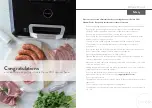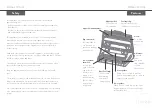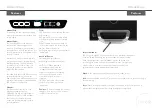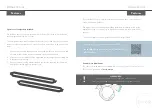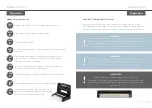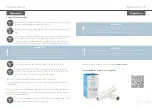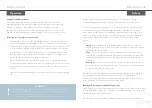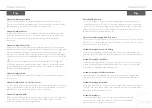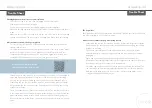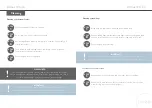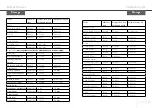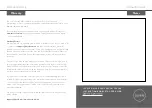
INSTRUCTION | P15
INSTRUCTION | P14
Vacuum Sealing Moist Items:
Moist items are more difficult to vacuum seal because the moisture in the
bag naturally wants to get sucked towards the seal area where the vacuuming is
taking place. If the moisture reaches the seal line the vacuum sealer will
automatically start to seal the item. This can happen while there is still air in the
bag and can give the appearance that the vacuum sealer is not working correctly.
Following are some tips to overcome this:
• If attempting to seal moist meats like fish and chicken, it is recommended that you
cut the vacuum bag with extra length, so there is room for the moisture to move
during the vacuuming process and so the moisture does not reach the seal line. 10
to 15cm should be enough length from the end of the meat item to the seal area.
• Another solution to sealing high moisture items is to wrap them in plastic wrap
then place them in the vacuum bag to be vacuum sealed. This should prevent
most of the liquid being sucked towards the seal area.
• If placing large moist items in a bag like a whole fish, it is very important you do
not leave any moisture near the seal area. Once you have placed this type of item
in the bag use some dry paper towel to wipe down the seal area for a successful
outcome.
• Liquid items like soups, stocks, gravy etc should all be frozen before attempting to
seal.
Storage time will vary depending on the freshness of foods that are being
vacuumed packaged. The fresher the foods the longer the storage time will be.
The main element that causes food to lose its nutritional value, texture, flavor, and
overall quality is oxygen. Vacuum packaging helps to extend the life of foods by
removing most of the oxygen in a sealed bag or container. Removing oxygen from
stored foods helps to inhibit the growth of micro-organisms. There are three main
types of micro-organisms that affect stored foods. They are mould, yeast and
bacteria.
• Mould
: Easy to identify due to its characteristic fuzz. Moulds cannot grow in
vacuum packaging because of the low oxygen environment. Therefore, vacuum
packaging eliminates mould.
• Yeast
: Yeast is the fermentation of foods. It can be identified by smell or taste.
Yeast requires sugar and a moderate temperature to grow and it can grow with
or without air. Refrigeration will slow the growth of yeast and freezing stops it
completely.
• Bacteria
: Bacteria can grow with or without air. Bacteria results in discoloration,
soft or slimy texture and an unpleasant smell. The best way to combat bacteria is
to both vacuum pack and freeze foods.
Storing foods at low temperatures is critical for preserving foods safely. Growth of
micro-organisms is reduced at temperatures below 4° C. Storing foods at -17°C
will not kill micro-organisms but it will stop them from growing. For the best results
freeze perishable foods that have been vacuumed sealed.
Thawing and heating vacuumed packaged foods
Always thaw frozen foods in the refrigerator or microwave. Do not leave foods to thaw
at room temperature. When microwaving a vacuum packaged food cut a corner of the
bag and place on a microwave safe tray.
You can reheat foods in a vacuum sealed bag by placing in water at a low simmer.
IMPORTANT:
Vacuum sealing liquids like soups, oils, wet marinades etc. in a bag without
freezing them should be avoided. The best solution to vacuum seal liquid with
your Deluxe PRO vacuum Seal is with our glass canister set.
Please visit luvele.com.au for more information on our glass canister set.
!
Operation
Safety


